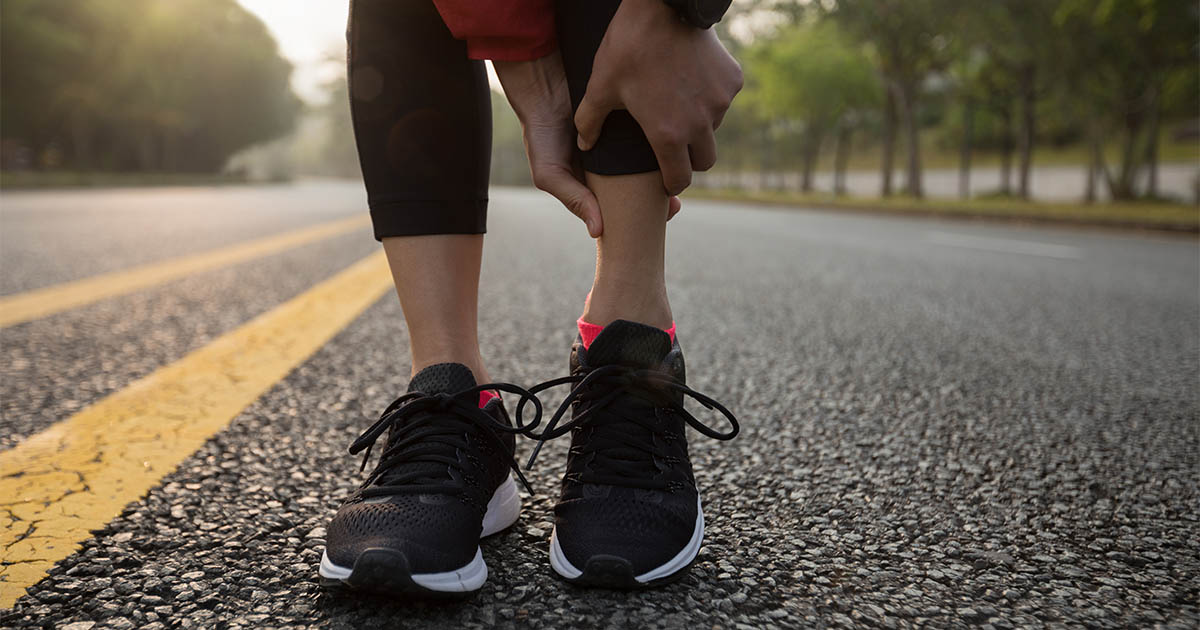I’m Injured...Now What?
by Courtney Littlejohn, Esq.
*Disclaimer: Before implementing these or any physical fitness recommendations, it is important to consult with a physician to determine the best course of action for your own health and recovery.*
So you’re injured...now what? The first thing you have to ask yourself is what you want to set as a new goal. Of course, you want to heal and get healthy again so that you can get back to the miles. Beyond that, though, how do you want to use this time on the sidelines? Note that I didn’t say “on the bench” because you aren’t going to just passively sit and wait for the injury to heal. It’s all about keeping active while injured.
Last year, after experiencing a year plagued with running injuries, I topped things off with a tear in my ankle (posterior tibial tendonitis) that ended up sidelining me for more than three months. Of course, my podiatrist suggested that I rest to help the tear heal, but he also suggested that I do more than just run. I wasn’t sure what to do about that advice because running had become such a big part of my life. This made me realize that I had to do more than just “get better” if I was going to continue my love affair with running. So, I decided that I needed to find a way to be smarter about running and to focus my energies on trying to prevent injuries in the first place by taking the time to learn about my passion.
In the article “Benefits of Cross Training for Runners,” Very Well Fit explains that running injuries are often caused by overuse of the “big” muscles and underdevelopment of the “little” muscles that support them. I knew that I needed to round out my running routine with some cross training. Since I was already injured, I looked into types of training that would A) not disrupt my recovery and B) target those other, “little” muscles that I had been neglecting.
Finding the best sort of recovery training will vary for each person. For me, it was calisthenics or bodyweight training. It was great for focusing on the “little” muscles, building a strong core and butt (an often overlooked muscle for running) and for helping me learn how to carry my weight more efficiently while running. Consider the following suggestions when looking for the best way to redirect your focus and goals during injury recovery.
Pay Attention to Your Body
How long has it been since the pain started? Have traditional recovery methods made little or no improvement? Know when to see a doctor. He or she can distinguish between soreness that can be powered through or a definite injury. Once you’ve seen a doctor, LISTEN to the prescribed recommendations. If the doctor says to stay off of that injured ankle/knee/hamstring, don’t be hard-headed!
Stay Active in Other ways
Take the time to find other activities that you enjoy to focus the energy you can no longer use due to the injury. A few good options include:
Weight Lifting - Focus on more than just picking the weights up and putting them down. Think about the muscles that are being worked with each movement.
Calisthenics - Bodyweight exercises that focus on strengthening the areas where you are weak. Also use these to focus on your core, because a lot of hidden strength is centered there.
Low Impact Cardio - Cycling (not including rigorous spin classes) and row machines are great lower impact cardio options to keep up your stamina and give the injured joint, etc. a bit of a break.
Yoga, Pilates - These exercises are great for helping you to focus on your breathing and build your core.
Walking - This one seems like a no-brainer, but you’ll have to resist the urge to turn that walk into a run before you’re ready to fully get back out there.
Deep-water running - In 1999, Runner’s World published a 9-week training plan for those who wish to stay fit and preserve sanity while out on the injured reserve list. Though the plan is more than eight years old, it’s still full of relevant advice that can be applied today for those who want to focus on not losing running progress while recovering. The deep-water running-heavy plan is not for the faint of heart and includes sessions five days per week for eight weeks straight. (Just be sure to get approval from your doctor first!)
Swimming - If deep-water running seems a bit much, there’s always good old-fashioned swimming to keep fit without overexerting your injury.
Give Yourself TIME
Recovering from an injury can mean anywhere from a couple weeks to several months. Listen to your doctor’s recommendations, and when it’s time to get back out there, ease into it! Remember that rushing will only lead to re-injury or some even worse setback.
Preventing Injury in the First Place
Assess your gear. Do you have proper running attire, well-fitting shoes, braces, if needed? Supplement your recovery with stretching and foam rolling routines. Most importantly, take care to stick to your rest days. Without them, you will not fully recover.
Visualize Your Comeback
“Your body won’t go where our mind hasn’t been.” Take the time to become mentally strong, because it is easy to lose confidence when trying to come back from an injury. Prepare yourself mentally for how challenging the process of injury recovery is going to be by journaling, meditating, reading motivational books/quotes, creating a vision board to map out your plan...you get the idea.
Before you know it, you’ll be speeding—er, power walking—down the path to recovery.
Courtney Littlejohn
RUNGRL
Courtney is an attorney, S.C. raised, D.C. made. She's about unapologetically being her authentic self--a lover of the law, running, and her faith.


